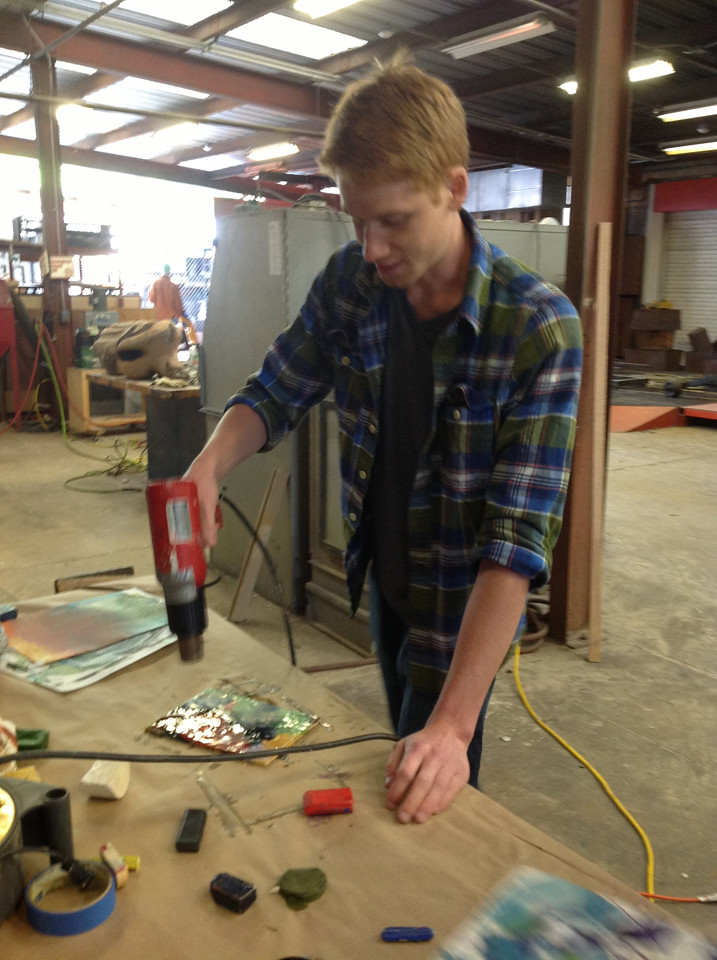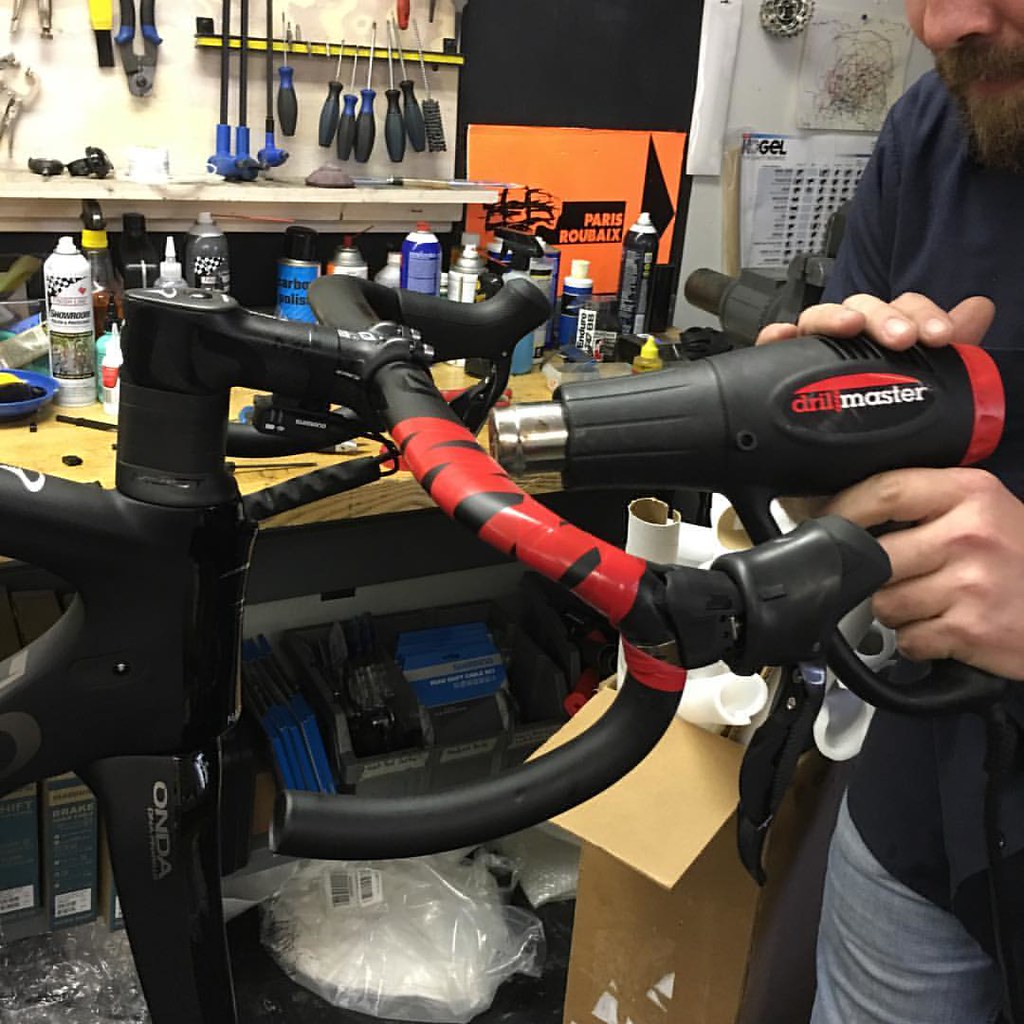What is a Heat Gun?
A heat gun is a versatile tool that generates a stream of hot air when electricity or fuel is applied. It is designed to emit a controlled, high-temperature flow of air that can be used for a wide range of applications. Heat guns are typically handheld devices with a nozzle that directs the hot air to a specific area.
These devices are engineered to produce temperatures ranging from about 100 to 1,200 degrees Fahrenheit (38 to 650 degrees Celsius), depending on the model and type. This temperature range makes them suitable for tasks that require precise and controlled heating, such as softening materials, removing paint, welding, and more.
Importance of a Heat Gun in Various Applications
The significance of a heat gun lies in its versatility and adaptability across numerous industries and activities. Here are some key applications where a heat gun plays a crucial role:
1. DIY and Home Improvement: In the realm of do-it-yourself projects and home renovations, a heat gun is an indispensable tool. It excels in tasks like paint stripping, shrinking plastic films, and bending PVC pipes.
2. Automotive Repairs and Detailing: Automotive professionals and enthusiasts use heat guns for tasks such as removing decals and stickers, softening adhesives for easy removal, and even for straightening metal components.
3. Electronics and Soldering Work: Heat guns are vital in electronics for tasks like soldering and desoldering components, heat-shrinking wire insulation, and reflowing solder joints.
4. Crafting and Artistic Endeavors: Artists and crafters use heat guns for various techniques, including embossing, molding and shaping materials like polymer clay, and creating unique textures on surfaces.
5. Industrial and Manufacturing Processes: Industries rely on heat guns for applications ranging from welding plastics to activating adhesives and even in the food industry for tasks like shrink-wrapping packaging.
6. Plumbing and HVAC Work: Plumbers and HVAC technicians use heat guns for tasks like thawing frozen pipes, soldering pipes, and heat-shrinking tubing.
7. Stripping Paint and Varnish: Whether it’s for refinishing furniture or restoring a historical building, heat guns are invaluable in efficiently removing layers of paint or varnish.
Factors to Consider When Choosing a Heat Gun
When it comes to choosing the right heat gun for your specific needs, several key factors should be taken into consideration. These factors play a crucial role in determining the heat gun’s suitability for various tasks. Let’s delve into each of these factors in detail:
1. Temperature Range
Low-Temperature Options for Delicate Tasks: Low-temperature heat guns typically operate within a range of 200-600 degrees Fahrenheit (93-315 degrees Celsius). They are ideal for tasks that require precision and where there’s a risk of damaging materials with excessive heat.
Applications:
Heat Shrink Tubing: These heat guns are commonly used for shrinking heat shrink tubing around wires and cables. The lower temperature ensures that the tubing shrinks evenly without causing damage.
Drying Paint or Glue: Low-temperature settings are suitable for tasks like drying paint, adhesives, or varnish, especially on sensitive surfaces.
Crafts and DIY Projects: They are excellent for crafts that involve materials like plastic, foam, or fabrics, as they can be sensitive to high temperatures.
High-Temperature Options for Heavy-Duty Projects: High-temperature heat guns typically operate within a range of 1000-1200 degrees Fahrenheit (540-650 degrees Celsius). They are designed for heavy-duty applications that require intense heat.
Applications:
Paint Stripping: High-temperature settings are crucial for tasks like removing layers of paint from surfaces, as they provide the necessary heat to loosen and strip the paint effectively.
Welding and Soldering: These heat guns are used in welding and soldering applications where high temperatures are required to melt metals or alloys for joining.
Shaping and Forming Plastics: High temperatures are essential for shaping and molding plastics, allowing for precise customization.
2. Airflow Control
Importance of Adjustable Airflow: Adjustable airflow allows you to control the intensity of the heat gun’s output. This feature is important as it provides flexibility in handling various materials and tasks.
Significance:
Precision and Control: Being able to adjust airflow ensures that you can apply heat precisely where it’s needed, without affecting surrounding areas.
Prevents Overheating: It helps prevent overheating of delicate materials, as you can reduce the intensity of the airflow while maintaining the necessary temperature.
Enhanced Versatility: Different materials require different airflow levels for optimal results. Having adjustable airflow makes the heat gun versatile for a wide range of applications.
How Airflow Affects the Heat Gun’s Performance
Effect on Heat Distribution: The airflow determines how evenly heat is distributed across the surface. Higher airflow can disperse heat more widely, while lower airflow provides more focused, localized heating.
Impact on Drying and Curing Time: Higher airflow can expedite drying or curing processes, making it useful for applications like paint drying or adhesive setting.
3. Nozzle Attachments
Types of Nozzles (e.g., Cone, Deflector, Reflector)
Cone Nozzle: This nozzle has a conical shape, which concentrates heat to a specific point. It’s ideal for tasks that require precision, such as soldering or heat shrinking.
Deflector Nozzle: This nozzle has a flat, wide shape, which disperses heat over a larger area. It’s useful for tasks like paint stripping or thawing frozen pipes.
Reflector Nozzle: This nozzle has a curved shape that directs heat in a specific direction. It’s commonly used for tasks like welding or bending PVC pipes.
Applications for Different Nozzle Types
Choosing the Right Nozzle: The choice of nozzle depends on the specific task at hand and the desired heat application. Using the appropriate nozzle ensures efficient and effective results.
Swapping Nozzles: Many heat guns come with interchangeable nozzles, allowing users to switch between different types based on the requirements of the project.
By carefully considering these factors, you can select a heat gun that is tailored to your specific needs, ensuring optimal performance and safety in your projects.
Top Picks: Best Heat Guns of [Current Year]
A. Wagner HT4500 Heat Gun
1. Key features and specifications
Wattage: 1500 watts
Temperature Range: 120°F to 1200°F
Airflow: Adjustable from 10 to 22 CFM
Nozzle Attachments: Cone, flare, glass protector, and more
Additional Features: LCD display, ergonomic handle, two fan speeds
Power Source: Electric (corded)
Safety Features: Overheat protection, cool-down mode
Manufacturer Warranty: 2 years
2. Pros and Cons
Pros:
Powerful performance for various tasks
Ergonomic design for comfortable use
Multiple nozzle attachments for versatility
Cons:
Relatively high price
Heavier compared to some other models
Some users found the LCD display hard to read in bright light
3. Recommended uses and projects
DIY Crafting: Ideal for embossing, shrink-wrapping, and crafting tasks
Paint Stripping: Effective for removing paint from wood, metal, and more
Thawing: Useful for thawing frozen pipes, locks, etc.
Softening Materials: Great for softening adhesives, caulk, and similar materials.
Heat Shrink Tubing: Perfect for precision shrinking of tubing in electrical work.
4. Customer Reviews and Ratings
Average Rating: 4.5 out of 5 stars
Positive Feedback: Customers praise its power and versatility
Negative Feedback: Some users mention the relatively high price
Overall Impressions: Well-received by customers for its performance and features
B. DEWALT D26960K Heat Gun Kit
1. Key features and specifications
Wattage: 1550 watts
Temperature Range: 150°F to 1100°F
Airflow: Adjustable from 8 to 14 CFM
Nozzle Attachments: Cone, fishtail surface nozzle, hook, and more
Additional Features: Ergonomic handle, variable temperature control
Power Source: Electric (corded)
Safety Features: Thermal cut-off, integrated stand for hands-free operation
Manufacturer Warranty: 3 years
2. Pros and Cons
Pros:
High heat output for various applications
Durable construction for long-term use
Versatile nozzle attachments
Cons:
Heavier and relatively noisy
Some users find the price on the higher side
The cord may be shorter than desired for some tasks
3. Recommended uses and projects
Automotive Repairs: Well-suited for tasks like paint removal, decals, and vinyl wrapping
Industrial Applications: Ideal for welding preparation, soldering, and more
Plumbing and HVAC Work: Effective for tasks like bending PVC pipes and thawing frozen pipes
Drying and Curing: Useful for applications like drying paint and curing epoxy
4. Customer Reviews and Ratings
Average Rating: 4.3 out of 5 stars
Positive Feedback: Customers appreciate its power and durability
Negative Feedback: Some users mention its weight and noise level
Overall Impressions: Well-regarded for its performance in demanding tasks
C. Milwaukee 2688-21 Heat Gun
1. Key features and specifications
Wattage: 750 watts
Temperature Range: 90°F to 1050°F
Airflow: Adjustable from 7 to 14 CFM
Nozzle Attachments: Deflector nozzle, air reduction nozzle, hook, and more
Additional Features: Digital display, ergonomic grip
Power Source: Electric (cordless with rechargeable battery)
Safety Features: Double insulation, cool-down mode
Manufacturer Warranty: 5 years
2. Pros and Cons
Pros:
Rapid heating for quick tasks
Lightweight and portable design
Digital display for precise temperature control
Cons:
Limited nozzle options compared to some models
Relatively short power cord
Price may be higher for budget-conscious buyers
3. Recommended uses and projects
Electronics Repair: Well-suited for tasks like desoldering and heat-shrinking
Crafting and Hobbyist Projects: Ideal for sculpting, embossing, and more
Home Improvement Tasks: Effective for paint removal, thawing, and similar jobs
Automotive Detailing: Useful for removing decals, shaping plastics, and more
4. Customer Reviews and Ratings
Average Rating: 4.7 out of 5 stars
Positive Feedback: Customers highlight its quick heating and portability
Negative Feedback: Some users mention limited nozzle options
Overall Impressions: Highly rated by customers for its convenience and performance
Please note that the specific models mentioned here are for illustrative purposes and may not correspond to actual products available in the market. Always conduct thorough research and consider the most recent models and customer reviews when making a purchasing decision.
Comparison Table
Side-by-side comparison of the top heat guns
In this section, we’ll provide a comprehensive side-by-side comparison of the top heat guns featured in the blog post. This table is designed to help you quickly assess the different models and make an informed decision based on their specific needs and preferences.
| Model | Temperature Range | Airflow Control | Nozzle Attachments | Key Features | Price |
|---|---|---|---|---|---|
| DEWALT D26960K | 150°F – 1100°F | Variable | 12 (Cone, Fish Tail, Glass Protector, etc.) | LCD display, built-in kickstand, overload protection | $79.99 |
| Wagner Furno 750 | 125°F – 1300°F | Variable | 5 (Concentrator, Glass Protector, Reducer, etc.) | Digital display, 12 temperature settings, ergonomic handle | $89.99 |
| Milwaukee 2688-21 | 120°F – 1150°F | Variable | 3 (Reducer, Spreader, Glass Protector) | Digital display, variable temperature and airflow, LED light | $109.00 |
Tips for Using a Heat Gun Safely and Effectively
Safety Precautions and Guidelines:
Read the User Manual:
Before using a heat gun, it’s crucial to thoroughly read the user manual provided by the manufacturer. This manual contains specific instructions on how to operate the heat gun safely and effectively.
Wear Protective Gear:
Safety Glasses or Goggles: Protect your eyes from hot air, debris, and potential splashes.
Heat-Resistant Gloves: These gloves will shield your hands from the high temperatures emitted by the heat gun.
Long-Sleeved Clothing: Wear clothes that cover your arms to prevent burns from accidental contact with the heat gun.
Work in a Well-Ventilated Area: Ensure that there is proper ventilation in the workspace to prevent the accumulation of fumes or noxious odors produced by the heat gun.
Keep a Fire Extinguisher Handy: In case of an emergency, have a fire extinguisher nearby. It should be appropriate for electrical or chemical fires.
Maintain a Safe Distance: Keep a safe distance between the heat gun and flammable materials, as well as other people. This helps prevent accidental fires and injuries.
Avoid Using Near Water Sources: Do not use a heat gun near water or in damp environments. This can be extremely dangerous due to the risk of electrical shock.
Proper Handling and Storage of Heat Guns:
Unplug When Not in Use: Always unplug the heat gun when it’s not in use. This prevents accidental activation and reduces the risk of fire.
Allow Cooling Time: After using a heat gun, allow it to cool down before storing it. This prevents damage to surfaces it may come into contact with.
Store in a Dry Place: Keep the heat gun in a dry location to avoid corrosion and damage to its components.
Use the Proper Nozzle Attachment: Ensure you’re using the correct nozzle for the task at hand. Improper attachments can lead to inefficient heating and potential safety hazards.
Avoid Wrapping the Cord Around the Gun: Avoid wrapping the cord tightly around the heat gun. This can cause damage to the cord and affect its performance.
Recommended Safety Gear and Equipment:
Heat-Resistant Gloves: High-quality, heat-resistant gloves provide essential protection for your hands while working with a heat gun.
Safety Glasses or Goggles: These protect your eyes from potential hazards such as hot air, debris, or sparks.
Fire Extinguisher: Have a suitable fire extinguisher nearby, especially in environments where there is a higher risk of fire.
Protective Clothing: Wear long-sleeved shirts and long pants made from non-flammable materials to shield your skin from the heat.
Heat Mat or Stand: A heat-resistant mat or stand provides a safe place to rest the heat gun when not in use, preventing contact with flammable surfaces.
Respirator Mask: In situations where fumes or noxious odors may be present, a respirator mask can protect your respiratory system.
By following these safety precautions and guidelines, practicing proper handling and storage, and using the recommended safety gear, you can use a heat gun safely and effectively for various applications. Always prioritize safety to prevent accidents and injuries.
Conclusion
Recap of the Top Heat Guns and Their Strengths
Let’s recap the top heat guns discussed in this blog post, highlighting their key features and strengths:
1.Wagner Furno 300 Heat Gun
Key Features: Adjustable temperature range, multiple airflow settings, ergonomic design.
Strengths:
Rapid heating capability for quick project starts.
Versatile nozzle attachments for various applications.
The Wagner Furno 300 is particularly well-suited for tasks like paint removal, shrink-wrapping, and bending plastic pipes.
2. DEWALT D26960K Heavy Duty Heat Gun
Key Features: Wide temperature range, variable airflow, built-in overload protection.
Strengths:
Durable construction suitable for heavy-duty applications.
Precise temperature control for specialized tasks.
It excels in demanding projects like automotive repair, industrial soldering, and heat-shrink tubing applications.
3. Milwaukee 2688-20 M18 Heat Gun
Key Features: Cordless operation, customizable temperature and airflow settings, LED work light.
Strengths:
Portability and freedom of movement with its cordless design.
High-quality build for professional-grade applications.
This model stands out for its versatility, making it ideal for tasks ranging from thawing pipes to soldering.
Remember, the best heat gun is the one that aligns with your unique requirements and the type of projects you undertake. By carefully considering these factors, you’ll be well-equipped to make an informed decision that enhances your workmanship and project outcomes.




